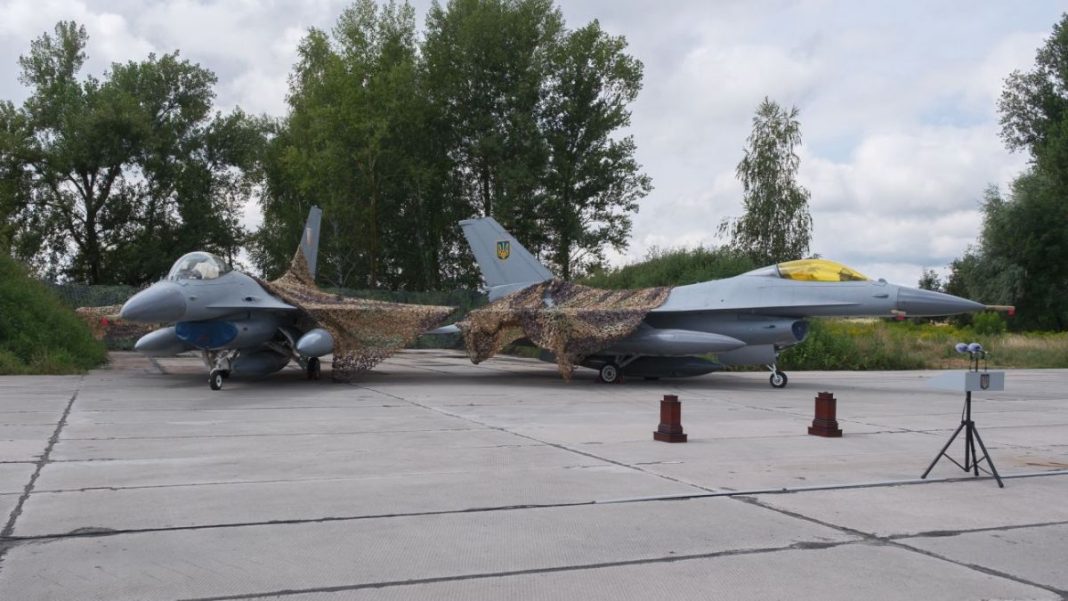Ukraine’s Air Force has managed to achieve what many thought was impossible: keeping its newly delivered F-16 fighter jets safe from heavy Russian missile strikes.
Ukrainian Air Force Tactics: Dispersal Strategy Changes the Game
While Russian forces continue to target Ukrainian airfields in their ongoing attacks, a smart and simple idea—part of key Ukrainian Air Force tactics—has saved these jets from destruction: dispersal.
One of the most effective Ukrainian Air Force tactics is avoiding the use of the same base for both takeoff and landing. Ukrainian pilots launch each mission from a different location and frequently move aircraft between airstrips to confuse enemy surveillance systems.
The main reason for this strategy is not just secrecy. Ukraine lacks enough fully functional airbases with modern infrastructure. So, the military adapted. It started using scattered and hidden areas for launching and landing jets, preventing any one site from becoming a consistent target. This move, though simple, has had a major effect—Ukrainian jets have rarely been destroyed on the ground.
🧨 Drone tactics rewritten — Ukraine strikes Russian offshore base with boat-launched quadcopters
Unlike Ukraine, Russian aircraft were kept in one place until their own airfields began facing drone attacks. Once that happened, Russia also began to spread out its aircraft. But Ukraine had already taken the lead in adopting these survival techniques, giving it a clear advantage in this area of warfare.
Mobile Units and Ukrainian Air Force Tactics Replace Permanent Bases
Another one of the clever Ukrainian Air Force tactics involves mobile maintenance units. These are large, truck-mounted service stations that take over the job of fixed airbase facilities. These units have all the tools and space needed to maintain fighter jets in hidden and scattered locations.
Each mobile complex includes a command post, mission planning space, and rest areas for pilots. Another unit has a complete workshop where weapons are tested and loaded onto the jets. These mobile systems allow Ukraine to keep its F-16s in top condition without the need for permanent and easily targetable bases.
🇺🇦 Ukraine hacks 100TB of Russian government data — massive cyber attack exposes Kremlin secrets
This new model of aircraft maintenance has proven especially useful after Ukraine received a fresh batch of F-16s from Western partners like the Netherlands, Belgium, and Denmark. The very first of these new mobile units arrived on July 22, 2024. By the next day, the Ukrainian Air Force had already showcased their setup, giving the world a look at this practical solution.
While some losses have occurred—such as during a large-scale Russian air attack in late August—Ukraine has mostly succeeded in keeping its jets airworthy and safe. This has helped maintain air power even under intense pressure by using effective Ukrainian Air Force tactics.
Western Support Fuels Progress
The arrival of F-16 fighter jets in Ukraine marked a turning point in its air defense strategy. The Netherlands led the way by officially approving the export of 24 aircraft in July 2024. Soon after, the first jets began arriving. By August, they were ready to operate from the field, supported by the new mobile servicing units.
Even though the exact number and locations of these jets remain secret, the fact that Ukraine is already using them successfully shows how quickly its forces adapted to the new systems. Ukrainian Air Force tactics help keep these high-value assets safe, maintain them in top condition, and ensure they remain operational even during constant threats.
In contrast, Russian attacks continue to focus on fixed Ukrainian airfields, often missing the real targets due to the unpredictable movements of the aircraft. The consistent application of Ukrainian Air Force tactics makes it much harder for the enemy to plan successful strikes.
This combination of mobility, surprise, and fast servicing on the go has changed how Ukraine’s Air Force responds to threats. Ukrainian Air Force tactics now serve as a model of adaptation under pressure, proving that strategic planning can overcome even high-tech attacks.
While Russian missiles continue to rain down on Ukrainian soil, the country’s smart use of dispersal and mobile support—key parts of Ukrainian Air Force tactics—has kept its F-16s flying. This approach has made it harder for Russia to land a successful blow on Ukraine’s air power, helping the nation stay strong in the skies.

